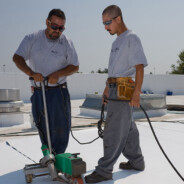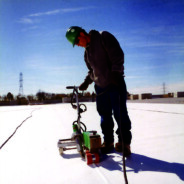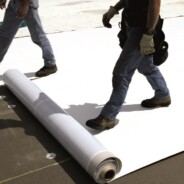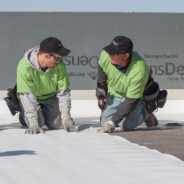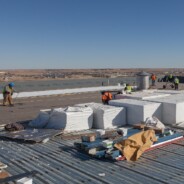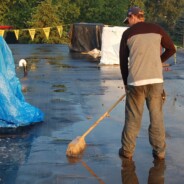Blog
First Half of 2017 and a Look Forward
As we head into the second half of 2017, let’s review how the year has stacked up so far. According to the U.S. Census Bureau, construction spending for the first four months of the year was $359.5 billion, 5.8 percent above the $339.7 billion for the same period in 2016. If we just look at April’s monthly construction spending, it indicates a seasonally adjusted annual rate of $1.21 trillion. If that number holds true, 2017 will experience a 4.8 percent increase over 2016. It looks like we can be in the range of about 5-6 percent growth in total construction spending. Let’s drill down further into the bureau’s April Value of Construction Put in Place Survey (VIP) results. Private construction spending compared to...
read moreBenefits of a Heat-Welded System
As we all know, “heat-welded roofs” refer to the seams of a roofing membrane that have been fused together with the application of heat. Single-ply thermoplastic polyolefin (TPO) membranes, including GenFlex’s TPO, are typically used. GenFlex EZ TPO and EZ TPO Peel & Stick™ HW are heat-welded roofing membranes made of high‑quality thermoplastic polyolefin. They are excellent choices regardless of configuration, usage, slope, height location or wind exposure. Installation Benefits When comparing heat-welded seams with glued or taped seams, the seam strength is 3–4 times more durable and requires 40–50% less seaming time, reducing labor costs and ultimately making the installation less expensive. Welding can be done...
read moreA Brief History of TPO
Beginning in the 1960s, prior to the introduction of Thermoplastic Polyolefin (TPO) in the US market, Polyvinyl Chloride (PVC) was the single-ply thermoplastic roofing system that was mainly used. PVC was known for its versatility since it could be molded to fit varying roof structures and could withstand chemical, light and temperature corrosion. However, PVC includes plasticizer additives to give it more flexibility, so after years of use, the plasticizers would break down, wash away and add chemicals to the soil. It also encourages mold growth and is affected by the weather over time, leading to roof shrinkage and cracking. These shortcomings lead to manufacturers conducting research in an effort to find a resilient solution that...
read moreContinuing Education Resources
For many of us, school or college days are just fond memories of the past. However, that doesn’t mean we can stop learning. As a commercial roofing business owner or someone working in the industry, the importance of continuing education in our changing industry should be recognized. While it is easy to become set in one’s ways, especially if you have been successful in the past, the industry is growing and changing and becoming more technology driven than ever before. You have to stay relevant and up-to-date on new products, trends, environmental issues, new methods to reach new and current customers, more efficient installation techniques, and new codes and regulations, to name a few. And, continuing education can include some...
read moreQ1 2017 Construction Industry Performance
Employment in the construction industry for the first two months in 2017 was up over the same months in 2016, according to the Bureau of Labor Statistics’ Openings and Labor Turnover Survey (JOLTS) report. New hires in January was up 92,000, and in February they were up 22,000 over last year’s numbers. The construction industry added a total of 756,000 new hires in the first two months. March numbers are also looking great. The Associated General Contractors of America (AGC) reports a 2.6% increase in construction employment in March from a year ago, and noted that construction employment is at the highest level since 2008! And, it looks to continue. Manpower’s Employment Outlook Survey for Q2 2017 reports an expected...
read moreSpring Roof Inspection
April showers bring…roof leaks? Not how you remember it? Well it is true, and it is especially possible if you don’t perform your spring roof inspection. Winter takes its toll on a roof. Freeze-thaw cycles, heavy snow loads, hail, and ice can really cause damage. Even if you live in a warm climate where cold-weather damage is not a worry, spring is a good time to have your roof inspected so you are ready for the stormy season ahead. If you plan to inspect the roof yourself, here are some things to know, what to look for and when to call an authorized contractor: Clear the rooftop of any debris. For best results, use a stiff bristle broom and apply positive downward pressure when clearing accumulated dirt and leaf deposits...
read more
